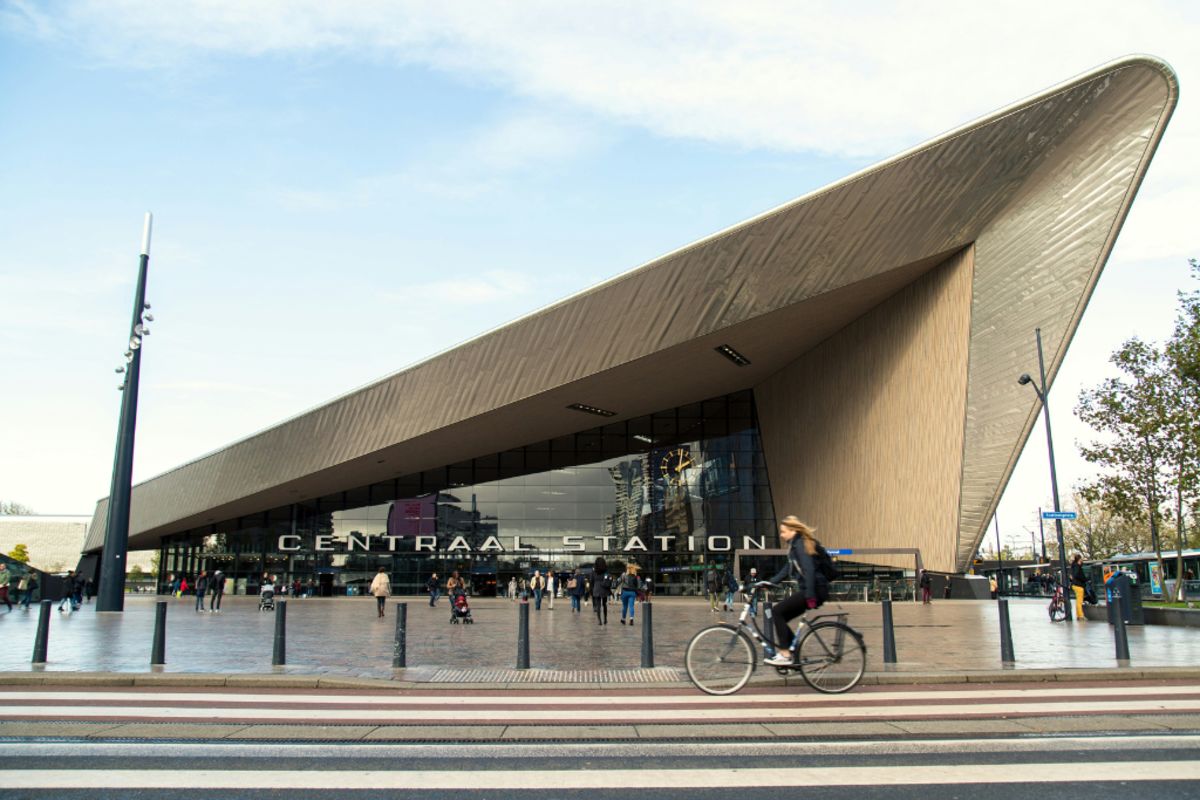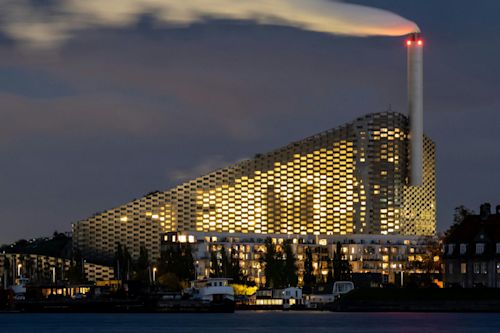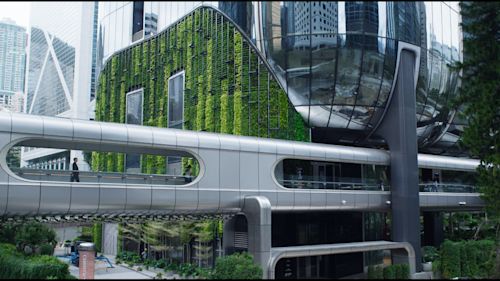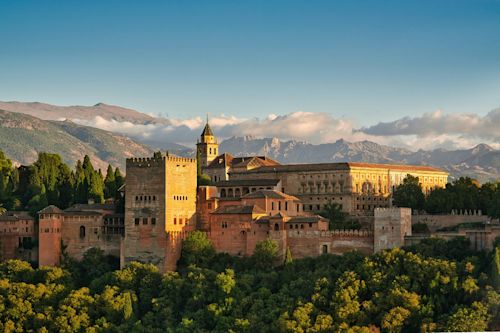Traveling Through Architecture: The World’s Most Fascinating Train Stations

Railway stations are places where lives intersect — where people depart, arrive, and wait, each for their own reasons. These spaces have long captivated both travelers and architects alike.
From an architectural perspective, stations are far more than simple points of transit. Many are masterpieces in their own right, reflecting the cultural identity and architectural evolution of the cities they serve. They also offer a window into the historical moment in which they were built. For architects, train stations are an endless source of inspiration — a rare balance between functionality and artistic expression.
The Architectural Evolution and Changing Role of Railway Stations

Railway stations have undergone a profound transformation over time, both in architecture and in function. In the past, they were true cathedrals of progress — designed with great aesthetic ambition to celebrate the spirit of modernity.
In the 20th century, particularly in the post-war period, their design shifted toward a more utilitarian approach, prioritizing efficiency and practicality over ornamentation.
Today, stations are entering a new era. Once again, they are becoming architectural icons, thanks to landmark projects by renowned architects and a renewed focus on sustainability and urban integration. Their role has evolved as well: from being mere transit points, stations have become vibrant, multifunctional hubs, offering shops, cultural venues, and services that activate the space well beyond the journey itself.
The Beauty of Historic Train Stations

The most beautiful railway stations in the world are not only functional structures but enduring architectural and cultural landmarks. Celebrated in countless books and articles, these stations have captivated generations of travelers, earning their place as iconic symbols within the urban landscape. Many are now considered attractions in their own right, often included in the official tourist itineraries of major cities.
One of the most emblematic examples is New York’s Grand Central Terminal. Opened in 1913, it remains one of the world’s most renowned stations—famous not only for its scale but for the grandeur of its Beaux-Arts architecture, expansive concourses, and celestial ceiling. A true monument to early 20th-century design, it has transcended its functional role to become a pop culture icon, featured in films ranging from 'The Untouchables' (1987) by Brian De Palma to the animated hit 'Madagascar' by DreamWorks.
Another remarkable example is the Chhatrapati Shivaji Maharaj Terminus in Mumbai, India. A masterpiece of Victorian Gothic architecture, it was declared a UNESCO World Heritage Site and designed in 1878 by British architect Frederick William Stevens. The station blends British colonial design with intricate elements of Indian decorative art, resulting in a striking and culturally resonant composition. Originally named Victoria Terminus, it was renamed in 1996 to honor Chhatrapati Shivaji Maharaj, the legendary Maratha king and symbol of local pride and independence.
In Europe, Madrid’s Almudena Grandes Atocha Station stands out as Spain’s busiest railway hub and a symbol of architectural continuity. Renowned for its striking modern structure that embraces the original 19th-century building, Atocha surprises travelers with an unexpected feature: a lush indoor tropical garden. This green oasis, home to more than 7,000 exotic plants, offers a moment of calm and wonder amid the bustle of travel.
A Bridge Between Past and Future

Today, many train stations successfully reconcile historical heritage with contemporary innovation. Some are meticulously restored with respect for their original architecture, while others are reimagined as hybrid spaces—part museum, part modern infrastructure. Their role within cities has expanded: from mere transport hubs to key players in urban regeneration.
A striking example is King’s Cross Station in London, the centerpiece of a major redevelopment project that has transformed the entire surrounding area into a vibrant modern district filled with public spaces, offices, art galleries, and academic institutions. The renovation preserved the 19th-century terminal’s character while seamlessly integrating contemporary architecture, most notably the dramatic, fan-shaped roof of the new concourse.
In Italy, the new Tiburtina Station in Rome exemplifies this forward-thinking approach. Completed in 2011 and designed by the ABDR studio, it is one of the first Italian stations built to reflect the scale and function of major European hubs. Its prominent feature—the elevated "tunnel bridge"—not only spans the rail lines but also houses pedestrian walkways and commercial areas, redefining the station’s relationship with its surrounding neighborhoods.
Meanwhile in Japan, Kanazawa Station, inaugurated in 2005, is renowned for its monumental entrance: the Tsuzumi-mon Gate, a modern wooden structure inspired by traditional Japanese hand drums. This bold fusion of modern engineering and cultural symbolism offers a powerful visual metaphor for the connection between past and future.
Fascinating and Innovative Contemporary Train Stations

Some of the most captivating train stations today are contemporary creations—structures that serve not only as transport hubs, but also as destinations in their own right. They reflect the identity of their cities and countries while redefining what public infrastructure can be.
One striking example is Liège-Guillemins Station in Belgium, designed by Spanish architect Santiago Calatrava and inaugurated in 2009. Here, light becomes an architectural element: its sweeping 145-meter-long roof in steel and glass floods the interior with natural light, creating an open, transparent, almost ethereal space. Far from a traditional station, it functions as a civic landmark—bright, inviting, and symbolic of progress and openness.
At Rotterdam Centraal Station in the Netherlands, a major renovation completed in 2014 resulted in a structure that seamlessly integrates with the urban fabric. Its iconic triangular roof, angled toward the city, serves as both a practical and symbolic gesture—welcoming travelers and linking the station to the city’s rhythm. More than a terminal, it has become a social and visual anchor in Rotterdam’s landscape, blending movement, architecture, and identity.
In Italy, Naples Afragola Station, designed by Zaha Hadid Architects and inaugurated in 2017, embodies the concept of dynamic motion. With its fluid, sculptural lines, the station appears to stretch and glide across two territories like a bridge. Designed to handle over 30 million passengers annually, it is conceived as an intermodal, sustainable hub, ready for future expansion.
Stations with strong symbolic and urban value are also emerging across Asia. Hong Kong’s West Kowloon Station, the high-speed terminal linking the city with mainland China, was completed in 2018 by Andrew Bromberg of Aedas Studio. Its walkable, undulating glass roof offers sweeping views of the skyline while creating an immersive, dynamic experience that fuses infrastructure and urban landscape into a single fluid gesture.
Vienna’s Hauptbahnhof, completed in 2014, reflects a European vision of intermodality, where metro lines, trams, buses, and high-speed trains converge beneath a geometric “diamond” roof. The structure floods interior spaces with natural light and optimizes passenger flow. More than just a transport hub, the station incorporates offices, shops, and public services—becoming an integral piece of the city.
Finally, the Breda station in the Netherlands exemplifies transit-oriented development. Designed by Koen van Velsen and winner of the Dutch Building Award in 2017, it merges public, residential, and commercial spaces into a cohesive complex. Promoting intermodality and sustainable mobility, the station is envisioned not as a point of departure but as a living, central part of the urban fabric.



